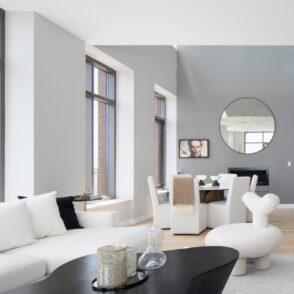So you’ve found the perfect apartment, settled in and applied your own design touches to create the home you’ve always wanted. You obsessed over getting the right furniture and decorative pieces and everything is how you envisioned. You’ve made your home comfortable, but can you take comfort in the fact that at any time it can all be lost?
This is a fear that many renters face. Though you’re extra careful with your own property, you live in New York, and have neighbors that aren’t so careful. Perhaps they plug 20 devices into 1 extension cord and cause a fire, or clog their bathtub and accidentally flood the bathroom, and now adjacent apartment units are damaged including yours. There are so many things that aren’t under your control. So is it worth it to buy renter’s insurance? We cover the basics so that you can make a sound decision about whether or not it’s an investment you should make.
Do I need renter’s insurance?
Homeowners who mortgage their property are required to have insurance. The lending bank needs to know that their collateral is secure. But renters don’t face this requirement. Your property is solely yours, and only you make the decision whether or not it’s worth paying a premium each month to prevent damage or total loss concerning your belongings.
What does insurance cover?
Your policy will likely cover three areas:
- Personal Possessions: You’re protected by damage due to fire, theft, and some natural disasters (read the policy carefully to understand exactly what it covers)
- Liability Protection: covers you against lawsuits for bodily injury or property damage caused by you on your property.
- Supplemental Living Expenses: if you’ve been forced to vacate your home while it’s being repaired, your alternate living arrangements are covered, like hotel expenses and meals.
What options do I have regarding coverage?
There are generally two types of coverage:
- Actual Cash Value Coverage: estimates the current value of each item. As this calculation includes depreciation, this value is almost never what you originally paid for the item
- Replacement Cost Coverage: this policy pays to replace your items, and does not involve any calculations for depreciation
Replacement coverage is the more expensive option but is the most straight-forward to understand, and more sensible in that many items, specifically electronic devices depreciate quickly.
How much does it cost?
It’s possible to purchase a policy with minimum coverage at under $200 a year. What you’re paying for is the value of your personal belongings. If you own a lot of high-value items, your policy will cost more. Standard coverage ranges from $25,000 to $50,000.
The policy will come with a deductible (the cost that you need to cover out-of-pocket before your insurance coverage takes over) which can range from $500 to $2,000. If you opt for a policy with a higher deductible, your monthly premium payment would in turn in be lower.
What do I need to do?
You need to take an assessment of all of your property. This includes furniture, clothing, electronics and appliances—essentially anything that you’ve purchased that didn’t come with the apartment. And you need to assign a value to each item. The best approach is to take pictures of your belongings and keep track of receipts and credit card statements. Submit this to the insurance company and an appraiser will make proper adjustments.
Obtaining renter’s insurance is decision that many people teeter on as they try to understand whether or not it’s truly a necessity. But if you have a grasp on the value of your belongings and come to the conclusion that it would be difficult to replace your property in case of a disaster, securing renter’s insurance can be a wise investment which will help sustain your homelife and give you proper peace of mind.


